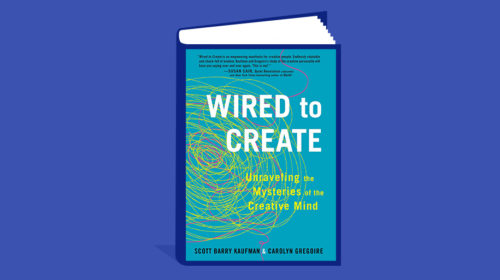
Wired to Create: Unraveling the Mysteries of the Creative Mind
Scott Barry Kaufman and Carolyn Gregoire | Creativity
Why we love it: Organized around the 10 things that creative people do differently, this book weaves scientific discoveries with inspiring stories about artists, musicians, and inventors—then shows how to apply the lessons to your own life.
From pages 33-34:
Artists like John Lennon, who wrote the classic song “Imagine” as a tribute to those who dreamed of the possibility of a better world, have self-identified as dreamers. Andy Warhol, too, said that “everybody must have a fantasy.” Turning our attention away from the external world and tuning in to the world within—dreams, fantasies, stories, personal narratives, and feelings—not only builds a sense of meaning and hope, as Lennon’s anthem suggests, but also allows us to tap into our deepest wellsprings of creativity.
Why? Creative work requires a connection to one’s inner monologue, and it is from this stream of desires, emotions, and ways of making sense of the world that new ideas and novel perspectives arise. T. S. Eliot was ahead of his time in recognizing the role of mind wandering in creative incubation, which he referred to as “idea incubation” in his 1933 work, The Use of Poetry and the Use of Criticism. Eliot argued that creativity required an “incubation period” during which the mind could unconsciously process preexisting ideas—and for this reason, he believed that illnesses forcing the artist to take to bed and avoid the usual distractions of their daily routines could be surprisingly beneficial for creative work.
